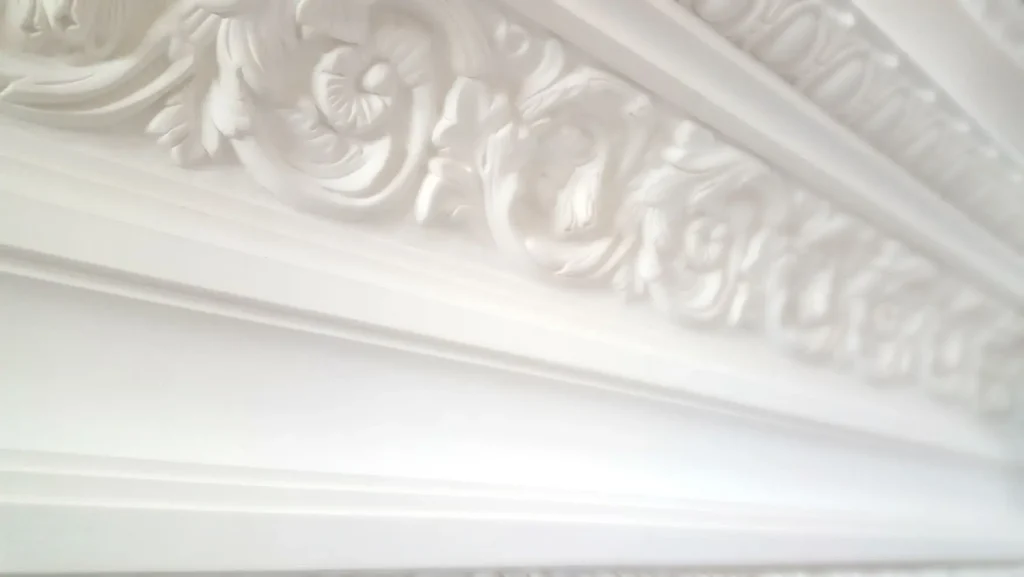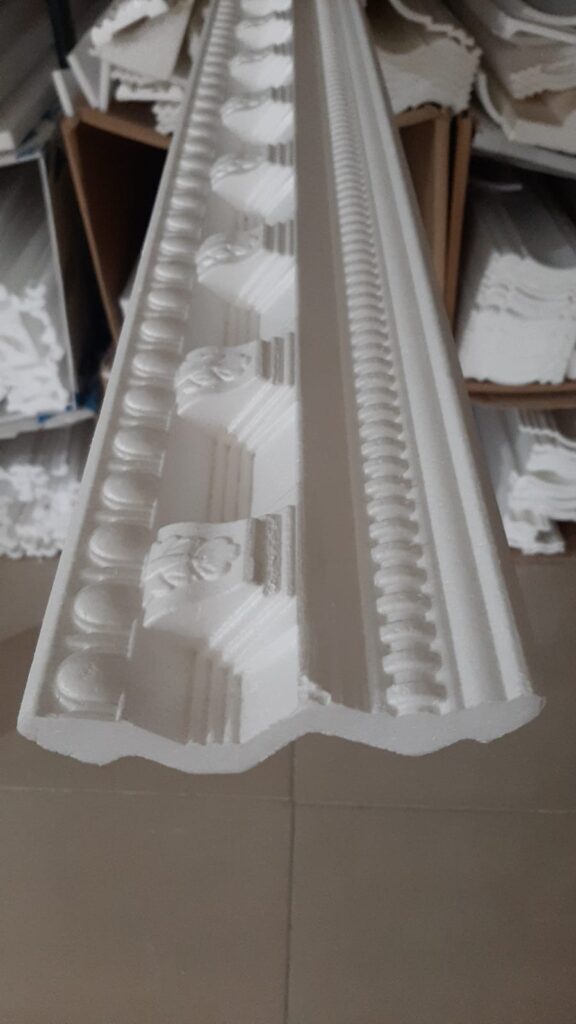Crown molding is a classic design feature that adds elegance and sophistication to any room. It is used to create a seamless transition between walls and ceilings, providing a finished and polished look. When selecting crown molding, choosing the right material is essential for durability, aesthetics, and ease of installation. In this guide, we’ll explore the most popular materials used for crown molding, their pros and cons, and how to decide which one is best for your home.
1. Wood Crown Molding
Overview:
Wood is one of the most traditional materials used for crown molding. It’s a popular choice because of its timeless look and versatility. Wood can be painted or stained, allowing it to match various room styles, from classic to modern.
Types of Wood:
- Pine: A cost-effective choice for crown molding. It’s soft, lightweight, and easy to work with, making it ideal for DIY projects.
- Oak: A harder, more durable wood with a rich grain pattern. Oak is a premium choice for high-end rooms and can add a luxurious feel.
- Maple: Another hardwood option that provides a smooth finish and is ideal for staining.
- Cherry: Known for its reddish-brown hue, cherry wood gives a more refined and sophisticated look.
Pros:
- Offers a classic and high-quality appearance.
- Can be easily customized with paint or stain.
- Strong and durable material, especially hardwoods like oak and maple.
Cons:
- Can be more expensive, particularly for hardwoods.
- Prone to warping or cracking over time due to moisture changes in the air.
- Requires more preparation and skill for installation, especially for intricate cuts.
2. Medium Density Fiberboard (MDF) Crown Molding
Overview:
MDF is a man-made material that is commonly used for crown molding. It is made from wood fibers, wax, and resin, compressed into a solid board. MDF is highly popular for its smooth finish and cost-effectiveness.
Pros:
- Affordable and widely available.
- Smooth surface ideal for painting.
- Does not warp or crack as easily as natural wood.
- Easy to install, making it a great choice for DIY enthusiasts.
Cons:
- Not as durable as hardwood, especially in high-humidity areas (such as bathrooms).
- Prone to damage from impacts.
- Cannot be stained like wood, but it can be painted in any color.
3. Polyurethane Crown Molding
Overview:
Polyurethane is a synthetic plastic material that is becoming more popular in crown molding due to its durability and versatility. It is lightweight, resistant to moisture, and provides a crisp, clean finish.
Pros:
- Moisture-resistant, making it ideal for kitchens and bathrooms.
- Lightweight and easy to handle during installation.
- Can be molded into intricate designs, offering a high degree of customization.
- Low-maintenance, as it doesn’t require painting if it’s already finished in the desired color.
Cons:
- May be less durable than wood in some cases, especially in high-impact situations.
- Can look less natural than wood, especially in traditional designs.
4. Polystyrene Crown Molding
Overview:
Polystyrene is a lightweight foam material that is often used for decorative molding. It is commonly used for budget-friendly crown molding solutions, as it offers a significant cost savings compared to wood and polyurethane.
Pros:
- Extremely affordable compared to other materials.
- Easy to install due to its lightweight nature.
- Resistant to moisture, making it suitable for areas like bathrooms.
- Can be painted to match the room’s décor.
Cons:
- Not as durable as other materials like wood or polyurethane.
- May not hold up as well in high-traffic areas.
- Can be prone to cracking or chipping if impacted.
5. PVC (Polyvinyl Chloride) Crown Molding
Overview:
PVC crown molding is a synthetic material that is highly durable and resistant to moisture and insects. It is an excellent choice for homeowners who need low-maintenance and long-lasting molding.
Pros:
- Resistant to moisture, which makes it suitable for bathrooms, kitchens, and basements.
- Low-maintenance and easy to clean.
- Does not warp, crack, or rot like wood, making it a long-term investment.
- Available in various styles and designs.
Cons:
- PVC can sometimes have a plastic-like appearance, which may not match the natural look of wood in certain design schemes.
- More expensive than MDF and polystyrene.
6. Flexible Crown Molding (Rubber or Polyurethane)
Overview:
Flexible crown molding is designed for use in curved spaces or irregular ceiling shapes. Made from flexible polyurethane or rubber, this molding can be bent to follow curved walls or ceilings without cracking or breaking.
Pros:
- Ideal for non-straight walls and ceilings.
- Offers the same benefits as polyurethane, including moisture resistance and ease of installation.
Cons:
- Not as widely available as rigid crown molding.
- May be less aesthetically pleasing if not installed properly.
7. Resin Crown Molding
Overview:
Resin crown molding is a newer material that combines the benefits of plastic with the aesthetic qualities of traditional molding. Resin molding can be designed in complex patterns and provides a high-quality finish at a reasonable price.
Pros:
- Offers a high level of detail and intricate designs.
- Durable and resistant to wear and tear.
- Can be easily painted or stained.
Cons:
- More expensive than foam options like polystyrene.
- Less flexible than polyurethane, so not ideal for curved spaces.
Choosing the Best Material for Your Crown Molding
When choosing the right material for your crown molding, several factors should be considered:
- Budget: If you’re looking for an affordable option, polystyrene and MDF are excellent choices. For more luxurious looks, hardwood and polyurethane offer high-end finishes.
- Durability: For areas with high moisture (like bathrooms and kitchens), materials like polyurethane, PVC, and polystyrene are ideal because they resist water and damage.
- Aesthetic: Wood offers a timeless, classic look, while materials like polyurethane, resin, and polystyrene can create intricate designs and styles.
- Installation: For a DIY-friendly option, MDF, polystyrene, and polyurethane are easy to install compared to hardwood, which may require specialized tools and expertise.
Conclusion
Selecting the right material for crown molding depends on your project’s requirements, budget, and style preferences. Whether you go for the traditional charm of wood or the moisture-resistant qualities of polyurethane, each material offers unique benefits. By carefully evaluating these options, you can achieve the perfect crown molding for your home that combines beauty, functionality, and durability.



